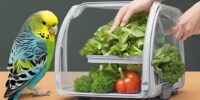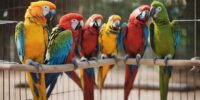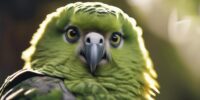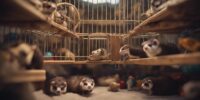What Role Do Parrots Play in Their Ecosystems?
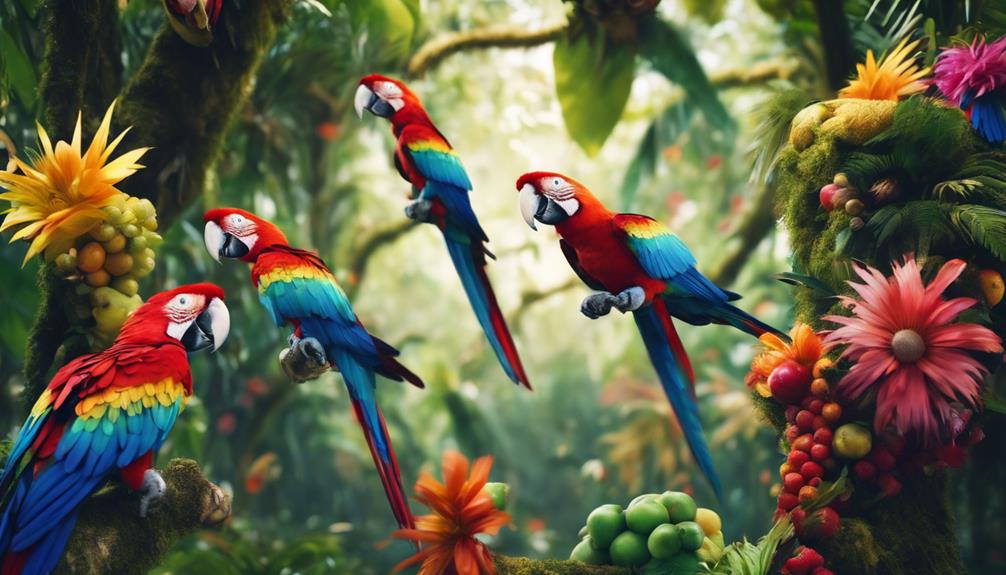
Parrots play a crucial role in their ecosystems. They aid in seed dispersal and nutrient recycling, contributing to the overall health and balance of their habitats.
Seed Dispersal
Parrots play a crucial role in ecosystems by actively dispersing seeds through their consumption and subsequent excretion in different locations. This avian behavior greatly contributes to plant propagation and helps maintain ecological balance. As parrots feed on fruits, nuts, and seeds, they inadvertently aid in seed dispersal by carrying seeds away from the parent plant. Their foraging habits often involve cracking open hard shells, further aiding in seed dispersal as the undigested seeds are later excreted in new areas. This process not only helps in the reproduction and distribution of plants but also plays a significant role in biodiversity and the overall health of the ecosystem.
The avian contributions through seed dispersal by parrots highlight the intricate relationships between flora and fauna in ecosystems. By understanding and appreciating the role these birds play in shaping their habitats, conservation efforts can be better tailored to protect and support these vital ecological processes. Parrots, with their unique feeding behaviors and capabilities, serve as important agents in the dispersion of seeds, ultimately contributing to the resilience and sustainability of the environment.
Pollination Assistance
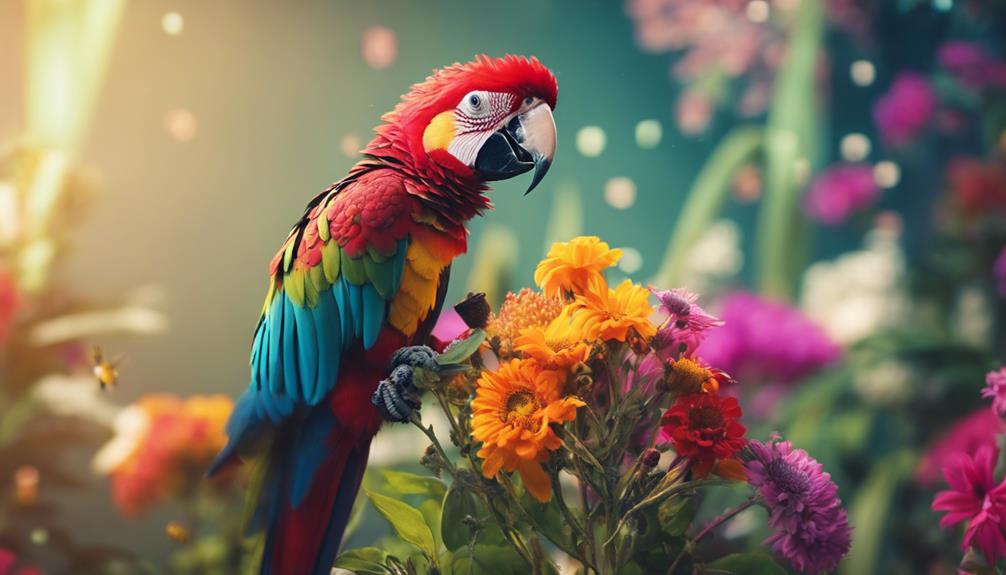
Parrots play a crucial role in pollination by transferring pollen between flowers as they forage for nectar and fruits. This assistance helps in the reproduction of plant species and contributes to the overall biodiversity of ecosystems.
Parrots Aid Pollination
Within diverse ecosystems, the invaluable role of parrots in aiding pollination can be observed through their interactions with various plant species. Parrots exhibit specific behaviors, such as feeding on nectar and fruits, which inadvertently assist in the pollination of flowers. As these colorful birds forage for food, they inadvertently transfer pollen from one flower to another, promoting plant reproduction and genetic diversity within the ecosystem.
This interaction is crucial for maintaining ecosystem balance, as it ensures the continued existence of plant species that rely on pollinators like parrots. By actively participating in pollination processes, parrots contribute to the overall health and stability of their habitats, showcasing the intricate interconnectedness of wildlife and plant life within diverse ecosystems.
Ecosystem Diversity Supported
A diverse array of plant species within ecosystems benefits from the pollination assistance provided by parrots, fostering ecosystem diversity and resilience. Parrots play a crucial role in pollination by transferring pollen between flowers as they forage for nectar and fruits. This process contributes to the reproduction of various plant species, ensuring genetic diversity and supporting ecosystem stability.
By aiding in pollination, parrots help maintain predator-prey dynamics, as many animals rely on fruits and seeds produced by these plants for sustenance. Moreover, in the face of challenges such as habitat fragmentation, the pollination services provided by parrots become even more critical for species conservation.
Therefore, the presence of parrots in ecosystems not only enriches biodiversity but also contributes to the overall health and sustainability of these habitats.
Vital Food Chain Link
How do the foraging behaviors of certain avian species impact the transfer of pollen between flowers, contributing significantly to ecosystem stability and biodiversity?
Parrots, with their diverse habitats and foraging patterns, play a crucial role in pollination assistance. By feeding on nectar, fruits, and seeds, parrots inadvertently pick up pollen on their bodies and transfer it between flowers as they forage. This process aids in fertilization, enabling plants to reproduce and maintain genetic diversity.
As a vital food chain link, parrots help maintain ecosystem balance and ecological harmony by promoting the growth of various plant species. Their contribution to pollination is essential for biodiversity conservation and overall ecosystem health, highlighting the interconnectedness of all species in a habitat.
Predation Control

Parrots play a significant role in the control of predation within their ecosystems through their vocal alarm calls and vigilant behaviors. These colorful birds are crucial in maintaining ecosystem balance and protecting wildlife through their actions. By emitting loud alarm calls when predators are near, parrots alert other species in the area, serving as a natural pest management system. Their keen eyesight and alert nature make them effective watchdogs, often spotting predators before other animals do. This early warning system not only benefits the parrots themselves but also helps protect other vulnerable species in the ecosystem.
Furthermore, the presence of parrots in an area can deter predators due to their gregarious nature and loud vocalizations. This behavior aids in bird conservation efforts by reducing the threat of predation on vulnerable bird populations. Through their role in predation control, parrots contribute significantly to the overall health and stability of their ecosystems, showcasing their importance beyond their colorful plumage and engaging personalities.
Biodiversity Support
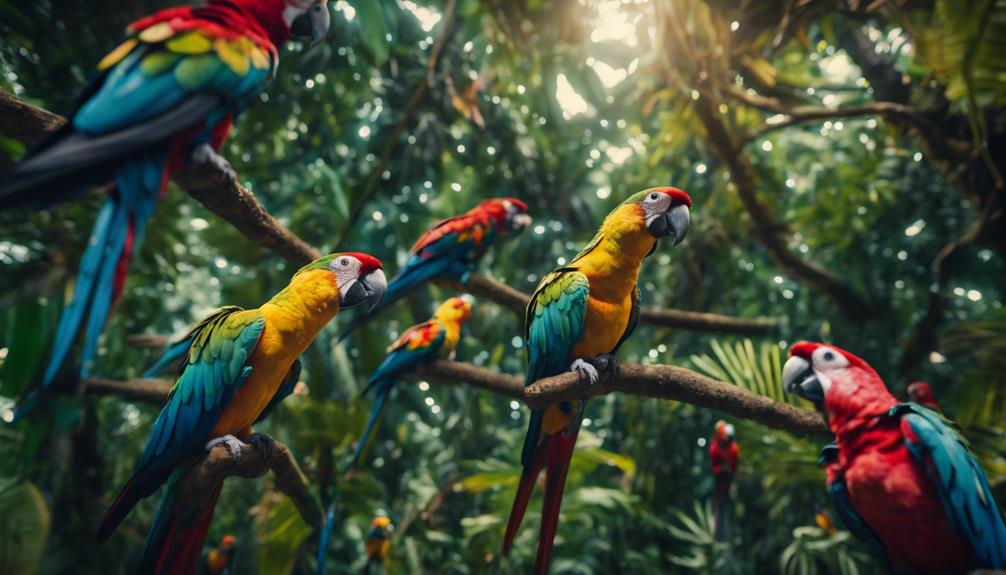
Parrots play a crucial role in supporting biodiversity within ecosystems through their interactions with various plant species. Their involvement in plant pollination enhances the reproductive success of numerous flowering plants, contributing to overall ecosystem health.
Additionally, parrots act as significant seed dispersers, aiding in the dispersion of seeds across diverse habitats and promoting the growth of a variety of plant species.
Parrots and Plant Pollination
Visiting a variety of plant species regularly, parrots actively contribute to plant pollination in ecosystems. Parrot behavior, such as foraging for nectar and fruits, brings them into frequent contact with flowers, facilitating pollination as they move from plant to plant. Their unique feeding habits and agile movements make them effective pollinators for various plant species. Parrots play a crucial role in maintaining plant diversity and ecosystem health through their floral interactions. The table below illustrates some examples of plant species commonly visited by parrots for feeding, thus aiding in pollination:
| Plant Species | Parrot Species | Habitat | Region |
|---|---|---|---|
| Eucalyptus | Rainbow Lorikeet | Forests | Australia |
| Agave | Lilac-crowned Parrot | Deserts | Mexico |
| Bottlebrush | Eclectus Parrot | Rainforests | Papua New Guinea |
Parrots as Seed Dispersers
Having evolved in diverse ecosystems, parrots demonstrate an integral role as seed dispersers, contributing significantly to biodiversity support.
- Habitat Restoration: Parrots play a crucial role in habitat restoration by dispersing seeds of various plant species, aiding in the regeneration of degraded areas.
- Conservation Efforts: By dispersing seeds over wide areas, parrots assist in the propagation of plant species, supporting conservation efforts to maintain biodiversity.
- Ecological Balance: The dispersal of seeds by parrots helps maintain ecological balance by ensuring the survival and distribution of plant species within their habitats.
- Species Interactions: Parrots interact with a wide range of plant species through seed dispersal, fostering complex relationships that contribute to the overall health and diversity of ecosystems.
Parrots and Insect Control
In the intricate web of ecosystem dynamics, the influence of parrots extends beyond seed dispersal to their role in regulating insect populations, thereby contributing to biodiversity maintenance. Parrots aid in pest control, helping to maintain ecosystem balance by preying on insects that can otherwise become harmful to plant life. Their foraging behaviors target various insect species, thus promoting insect diversity and allowing for natural control mechanisms to thrive within their habitats. This intricate interaction highlights the importance of parrots in not only seed dispersal but also in keeping insect populations in check, ultimately supporting the overall health and stability of the ecosystem.
| Pest Control | Ecosystem Balance | Insect Diversity |
|---|---|---|
| ✔️ | ✔️ | ✔️ |
Habitat Maintenance
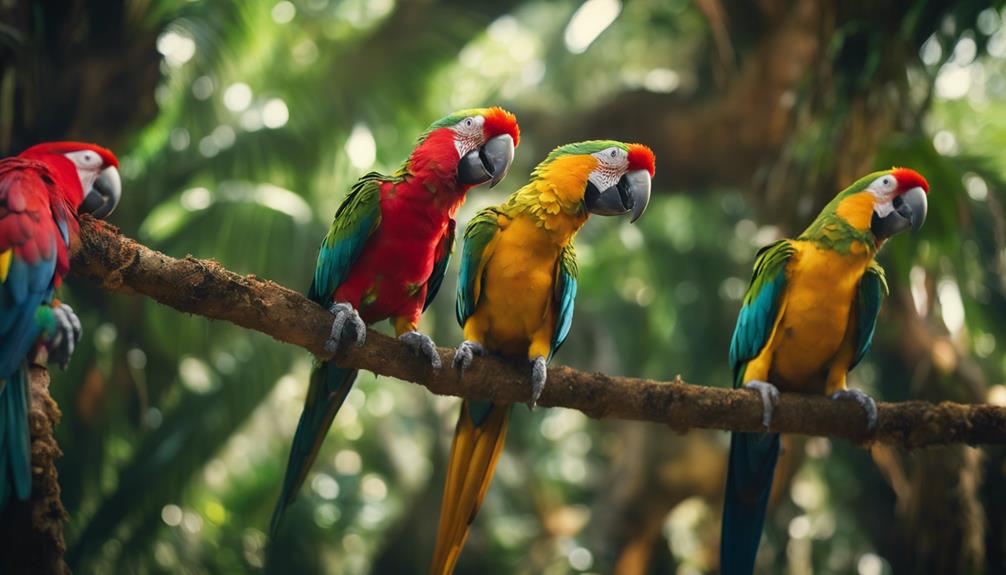
Parrots actively contribute to the maintenance of their habitats by participating in seed dispersal through their foraging activities. This behavior plays a crucial role in sustaining the ecosystem balance and promoting biodiversity conservation. The intricate relationship between parrots and their habitat maintenance can be observed in the following ways:
- Seed Dispersal: Parrots consume a variety of fruits and nuts, and through their movements across the landscape, they disperse seeds to new areas, aiding in the regeneration of plant species.
- Habitat Restoration: By dispersing seeds, parrots help in the natural restoration of degraded habitats, supporting the growth of vegetation crucial for the survival of various other wildlife species.
- Pollination: Some parrot species also contribute to pollination by transferring pollen while foraging, further enhancing the reproductive success of plant species within their habitats.
- Ecosystem Resilience: The role of parrots in habitat maintenance enhances ecosystem resilience, making the environment more adaptable to changes and disturbances, thereby promoting long-term wildlife preservation.
Nutrient Recycling
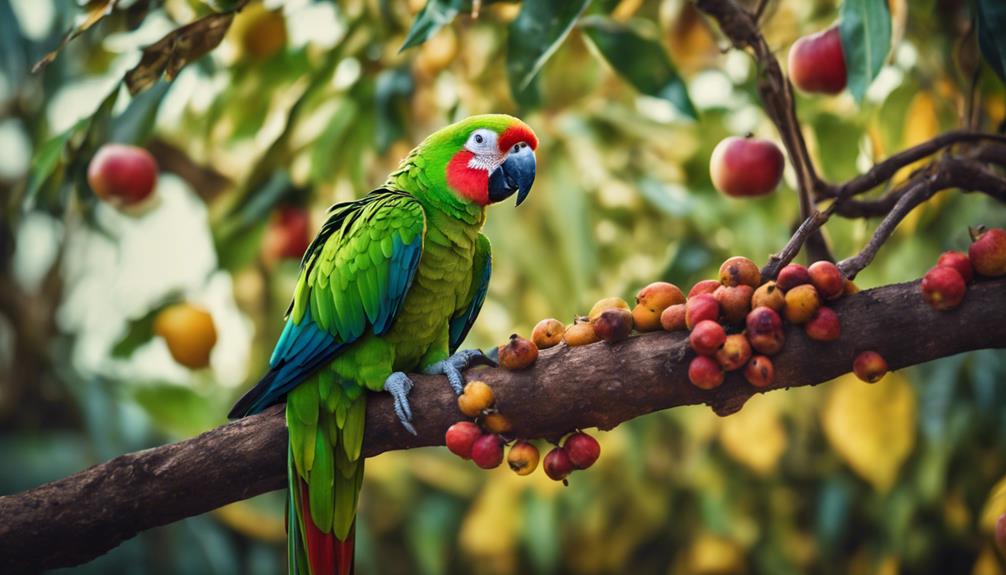
Nutrient recycling in ecosystems is a fundamental process that enables the efficient reuse of essential elements for sustaining the vitality of various organisms within the ecological community. This process involves the cycling of nutrients through various biotic and abiotic components of the ecosystem, ensuring the availability of crucial elements for plant growth and overall ecosystem health. One key aspect of nutrient recycling is the role that animals, including parrots, play in this intricate system. Parrots contribute to nutrient cycling through their feeding habits and subsequent deposition of nutrient-rich droppings, which aids in soil enrichment and promotes plant growth.
| Nutrient Recycling | Importance | Examples |
|---|---|---|
| Soil Enrichment | Facilitates plant nutrient uptake and growth | Decomposition of organic matter enriching soil |
| Plant Growth | Essential for ecosystem productivity | Recycling of nitrogen through plant-microbe interactions |
| Nutrient Cycling | Maintains balance within ecosystems | Conversion of nutrients from one form to another |
| Ecosystem Health | Ensures sustainability of the ecosystem | Recycling of carbon through the food chain |
| Biotic Interactions | Influences species diversity and interactions | Parrots dispersing seeds aiding in plant diversity |
Ecosystem Resilience
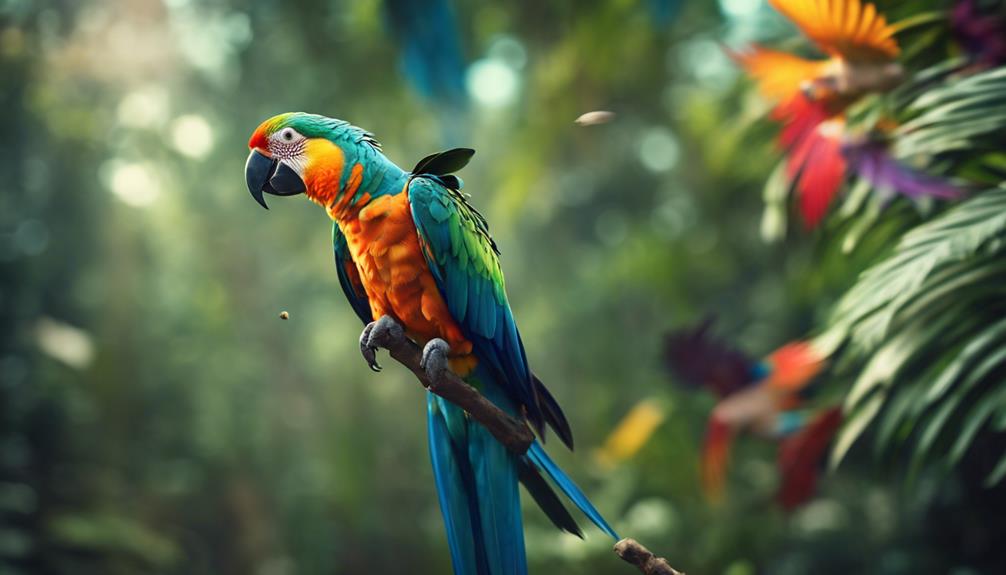
Ecosystem resilience is a critical attribute that allows ecological systems to adapt and recover from disturbances, maintaining their functionality and stability over time. This resilience is key to ensuring the long-term health of ecosystems and the wildlife that depend on them.
Here are four essential points to consider regarding ecosystem resilience in the context of wildlife conservation:
- Biodiversity: A diverse range of species within an ecosystem can enhance its resilience. Parrots, with their varied habitats and diets, contribute to the overall biodiversity of ecosystems, making them more resilient to changes.
- Habitat Protection: Preserving the habitats where parrots reside is crucial for maintaining ecosystem stability. By safeguarding these areas, we help ensure that parrots can continue to fulfill their ecological roles and support the overall health of the ecosystem.
- Climate Change Resilience: Ecosystem resilience plays a vital role in helping wildlife adapt to climate change. By promoting resilient ecosystems, we can better protect parrot populations and other species facing environmental challenges.
- Conservation Strategies: Implementing effective conservation strategies is essential for enhancing ecosystem resilience. By focusing on preserving biodiversity, protecting habitats, and mitigating the impacts of climate change, we can support the long-term stability of ecosystems and the wildlife within them.
Frequently Asked Questions
How Do Parrots Communicate With Other Species in Their Ecosystem?
Parrots, with their vibrant plumage and impressive vocal range, engage in intricate inter-species interactions through varied vocalizations, body language, and mimicry. These behavioral adaptations enable them to communicate effectively and coexist harmoniously within their ecosystems.
Do Parrots Have Any Specific Predators That Pose a Threat to Their Population?
Parrots face various predators in their ecosystems, including snakes, birds of prey, and mammals. These interactions influence predator-prey dynamics, helping control parrot populations. Understanding these relationships is crucial for conservation efforts and ecosystem balance.
How Do Parrots Adapt to Changes in Their Environment?
Adapting to environmental shifts, parrots modify feeding habits based on available resources. They adjust nesting behaviors in response to habitat changes. Some species exhibit flexible reproduction timing, while others alter migration patterns to cope with varying conditions.
Are There Any Conservation Efforts in Place to Protect Parrot Populations?
Conservation efforts for protecting parrot populations are crucial. Habitat protection, captive breeding programs, and education initiatives help safeguard these birds. Sustaining their ecosystems ensures their survival and benefits biodiversity as a whole.
Can Parrots Have a Negative Impact on Other Species in Their Ecosystem?
Parrots can impact other species in their ecosystem through predation dynamics and competition effects. Their presence may disrupt the ecological balance and species interactions, leading to changes in biodiversity and community structure.

